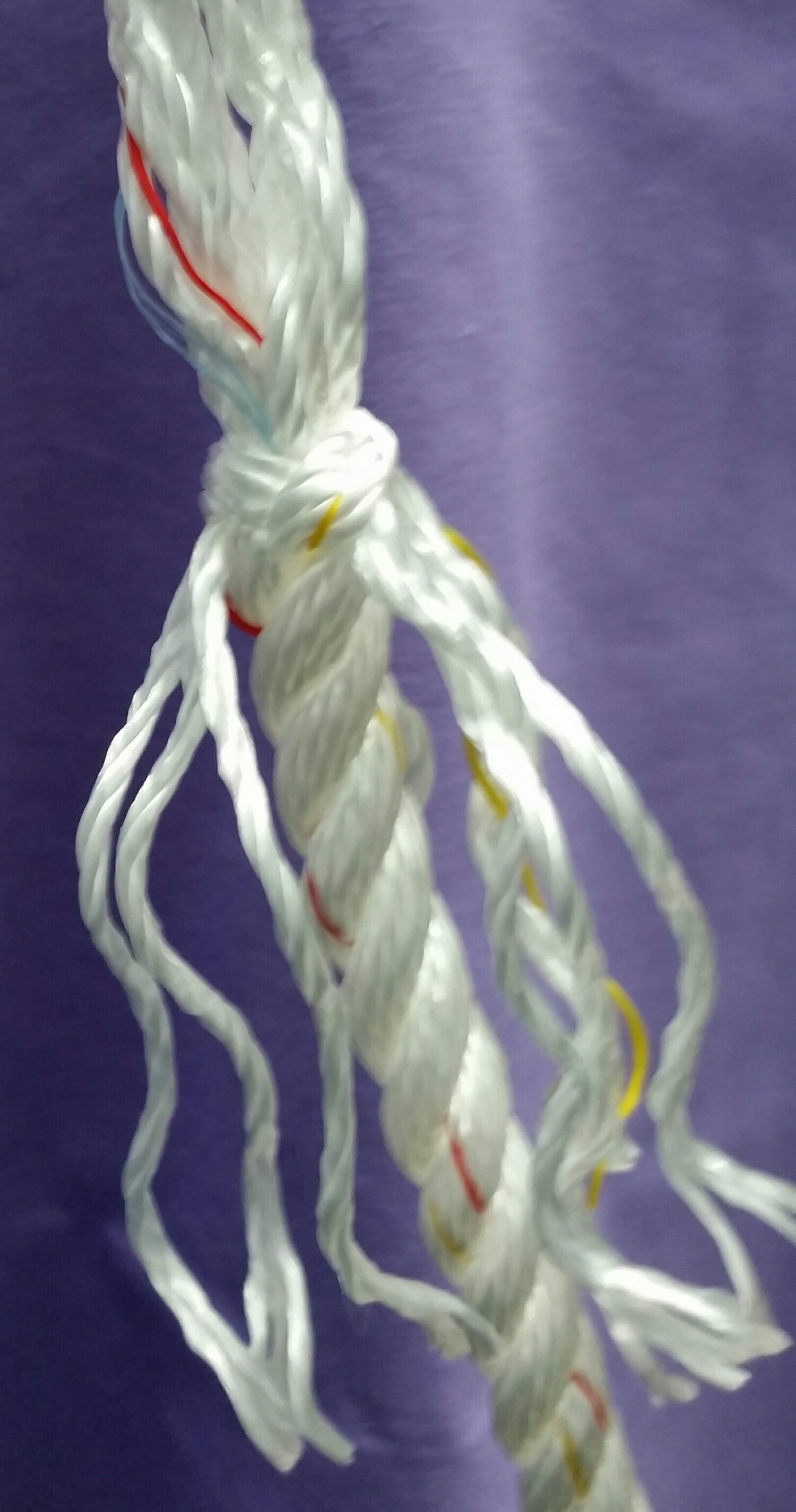The Tree Surgeons Backsplice has been mentioned before but there was no explanation as to how it is ma
To do a Tree Surgeons Backsplice, you need to reduce the number of yarns that compose each lay. I separate out 3 yarns from each lay (9 yarns total) to tie the crown knot and then back splice. This results in minimal bulk added to the end of the line so that it can still pass through small openings.
Tighten the crown knot all the way down until it reaches the tape (if you are using tape) or constrictor knot (if you are using cord) and then begin the back splicing.
Be sure to remove the tape or cord before beginning the backsplice, it is much more difficult to remove with the tails in the way.
Be sure to skip one lay before beginning the backsplice. This gives enough room for the crown knot to tighten down even more as the splice takes shape. A tighter crown knot will prevent the fuzzy end from working its way free and causing the end of the line to unravel.
Continue splicing the tails into the line as usual until the tails have been spliced in completely. I try to have at least 5 passes, but if I end up around 4 passes, it's not the end of the world. If your tails are long enough that you make it to 7 passes, you can cut off the excess because there is little advantage to making a backsplice longer than 7 passes.
The last step will be to cut the end of the line off. Be sure to leave around 1+ inches (around 3cm) of line past the crown knot. This line will be held tight and prevent the line from slipping out of the crown knot and causing the line to unravel.
Once it is completed, be sure to tidy up the splice by rubbing it between your hands. This will work the splice into the lay and cause the backsplice to even out. After it has been smoothed out, be sure to fuzz all the ends to prevent them from chafing other parts of the yacht. Lastly trim any long ends to make the splice look more presentable.
If you decide to use cord instead of tape, tie a Constrictor Knot just below where you want the crown knot. The distance from the constrictor knot to the end of the line is going to be a little less than the length of the tails available to complete the backsplice. I like to leave approximately 6 to 7 inches of line to give enough length to the tails.
Be sure that the 3 yarns from each lay occur near the outer edge of the line, that way they will help bind the whole line together rather than originating from the inside, and not having as much pull on the line as desired.
Be sure to remove the constrictor knot before beginning the backsplice, skip 1 lay, and then insert the tails into the line to complete the backsplice.
This backsplice will hold up well to use and abuse. As the ends of the line fuzz, they will become more unlikely to unravel and be less likely to chafe other lines they may come in contact with.
As you may have noticed, the Tree Surgeons Backsplice takes a notable amount of time to complete as compared to melting the ends with a flame. It takes me around 10 minutes to complete it while relaxing on my settee while watching a movie. It doesn't take a lot of thought or effort to complete, but it will last longer than melting and will not scratch the topsides or snag another line. I highly recommend this backsplice as it will last the life of the line!





































































